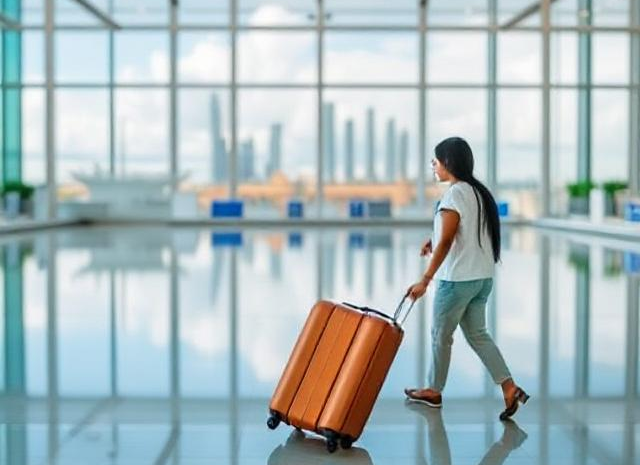
Does Travel Insurance Cover Lost Luggage?
Yes, travel insurance can cover lost luggage, but the extent of the coverage depends on the policy you choose. Lost luggage is one of the more common reasons travelers file claims, and different types of travel insurance offer varying levels of protection.
Here’s how travel insurance generally covers lost luggage and what to consider when purchasing coverage:
1. Types of Coverage for Lost Luggage in Travel Insurance
Travel insurance usually covers lost, stolen, or damaged luggage under the following conditions:
a. Lost Luggage
- Delayed Luggage: If your luggage is delayed for an extended period (usually over 6–12 hours), your travel insurance may cover essential items like toiletries, clothes, and other necessities until your luggage is returned.
- Lost or Stolen Luggage: If your luggage is lost permanently or stolen during the trip, many travel insurance policies will reimburse you for the value of your personal items up to a certain limit.
b. Luggage Theft
- If your luggage is stolen (e.g., from a hotel room or checked baggage), travel insurance may cover the cost of replacing your stolen belongings, subject to the terms and limits of your policy.
c. Luggage Damage
- If your luggage is damaged by the airline or a third party during travel, travel insurance may cover repairs or reimbursement for the damaged items. Some policies also cover damaged contents within your luggage.
2. What’s Covered: Typical Benefits
- Reimbursement for Lost Items: Travel insurance may reimburse you for personal items, such as clothing, electronics, and other valuables, up to a pre-defined limit. This usually depends on the specific policy you select.
- Essential Items: If your luggage is delayed for an extended period, many policies will cover the cost of essential items like clothes and toiletries until your luggage is returned to you.
- Emergency Expenses: Some policies may also cover emergency purchases if your luggage is lost or delayed while you are in transit, like toiletries, clothing, and medications.
3. Coverage Limits and Deductibles
- Coverage Limits: Policies often have a maximum reimbursement limit for lost or stolen luggage, and this can vary widely based on the provider and the plan. For example, some may cover up to $1,000 for lost luggage, while others may offer more or less.
- Deductibles: Some policies may require you to pay a deductible before they will cover the lost luggage claim. Be sure to understand the deductible amount when purchasing a policy.
4. Common Exclusions
There are some exclusions and conditions you should be aware of when it comes to lost luggage coverage:
- Unattended Luggage: If you leave your luggage unattended (e.g., in a rental car or at a public location), it may not be covered.
- Valuables: Some policies limit coverage for valuables like jewelry, electronics, or cash. These may be covered only if specifically listed or if you purchased additional coverage.
- Failure to Report Loss: Most insurers require that you report the loss or theft of luggage to the appropriate authorities (like the airline or local police) within a certain time frame, often within 24-48 hours.
- Pre-Existing Issues: If your luggage was already damaged before your trip or you didn’t pack it properly, it may not be covered.
5. Airline vs. Travel Insurance
While airlines are required to compensate you for delayed, lost, or damaged luggage, they often have limited coverage and strict requirements. Travel insurance, however, may offer better compensation and a more streamlined claims process for lost baggage. Here’s how they compare:
- Airline Compensation: If the airline loses your luggage, they will typically compensate you for the cost of replacement items up to a certain limit, though it can be a long and complicated process. Airline coverage is often limited to the value of the baggage itself (not the contents) and might not cover certain items like electronics or expensive personal items.
- Travel Insurance: Travel insurance often provides more comprehensive coverage, including compensation for delayed baggage, damaged items, and theft. It’s also more likely to cover personal effects and emergency purchases when compared to airline compensation.
6. Filing a Claim for Lost Luggage
To file a claim for lost luggage, you typically need to follow these steps:
- Report the Loss Immediately: As soon as you realize your luggage is lost, report it to the airline or the authorities (local police if it’s stolen) within the time frame required (usually 24-48 hours).
- Obtain a Claim Receipt: For delayed baggage, airlines usually provide a baggage claim number or reference number, which you’ll need for filing an insurance claim.
- Provide Documentation: You’ll need to provide documentation for your lost luggage claim, such as:
- Proof of the incident (e.g., a baggage claim ticket or police report)
- Receipts for any essential purchases (clothing, toiletries, etc.)
- List of items lost or damaged, along with their value (if required).
- Submit the Claim: Once you have all the necessary information, submit your claim to your travel insurance provider. They will review your claim and determine the reimbursement.
7. Additional Tips for Lost Luggage Coverage
- Check your credit card coverage: Some credit cards offer secondary insurance for lost or damaged luggage if you used the card to purchase your travel tickets or paid for checked bags. This can help fill in the gaps if your travel insurance doesn’t fully cover your luggage.
- Consider additional coverage: If you’re traveling with valuable items like electronics, cameras, or jewelry, you may want to add extra coverage for high-value items to your travel insurance policy.
- Track your luggage: Consider using a luggage tracking device or smart luggage tags to help track your luggage in case it’s lost.

